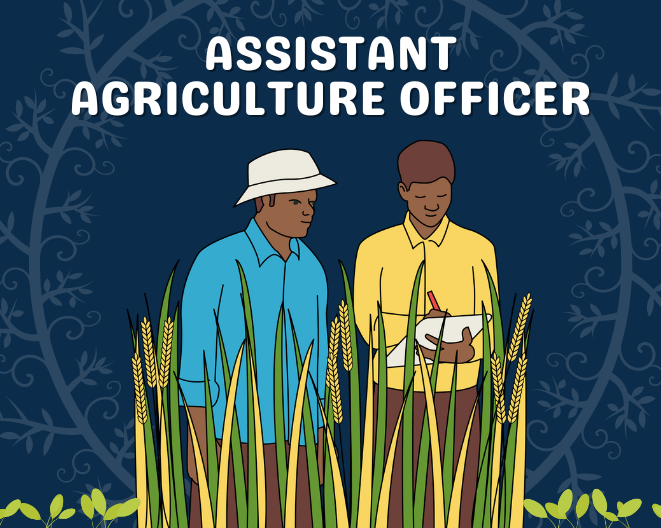In the sun-soaked landscapes surrounding the Mediterranean Sea, where temperatures soar during warm, dry summers and moderate, wet winters prevail, a silent revolution unfolds—a resolute response to the challenges posed by a changing climate. The climatic imprint, characterized by the rhythmic dance between scorching sunrays and temperate rainfall, shapes a unique agricultural narrative. Here, Mediterranean agriculture emerges as a dynamic system finely tuned to the nuances of its environment. This region, encompassing countries like Spain, Italy, Greece, and Turkey, witnesses the indomitable spirit of agriculture navigating the intricacies of adaptation.
As we delve into this exploration of resilience, a wealth of factual information unveils the intricacies of crop diversity, water management innovations, and adaptive strategies employed by Mediterranean farmers in the pursuit of sustainable cultivation practices amid climate change. From the terraced olive groves that dot the hillsides to the vineyards embracing sustainable viticulture, each aspect of this agricultural tapestry reflects the resilience and ingenuity of those who steward the land in the face of an ever-shifting climate.
What is Mediterranean Agriculture?
Mediterranean agriculture is a unique farming system practiced in regions with a Mediterranean climate. Characterized by hot, dry summers and mild, wet winters, these areas foster a distinctive set of agricultural practices tailored to the climatic conditions.
Hot Summers, Mild Winters
At the core of Mediterranean agriculture lies the climatic duality of hot, arid summers and mild, wet winters. This distinct weather pattern influences every facet of farming practices in these regions, necessitating adaptability and resilience.
Rich Diversity
Mediterranean agriculture boasts a diverse array of crops, each carefully selected to navigate the climate’s challenges. From the ubiquitous olive trees, grapes, and wheat to the inclusion of citrus fruits, tomatoes, and almonds, the agricultural landscape is a vibrant mosaic of resilience.
Diversity as a Climate Buffer
The cultivation of various crops acts as a natural buffer against climate-related risks. This strategic diversity not only ensures a more stable agricultural output but also contributes significantly to the culinary heritage of the Mediterranean region.
From the Field to the Table
The crops nurtured by Mediterranean agriculture are not just agricultural commodities but integral ingredients in the region’s renowned culinary heritage. Olive oil, wine, and an array of Mediterranean dishes are a testament to the deep connection between the crops and the rich cultural tapestry they help weave.
So what is Mediterranean agriculture? It is a harmonious interplay between tradition and innovation, adapting to the climatic nuances of hot, dry summers and mild, wet winters through the cultivation of diverse crops, preservation of ancient wisdom, and integration of modern technologies.
Where is Mediterranean Agriculture Practiced?
Mediterranean agriculture finds its roots in regions surrounding the Mediterranean Sea, including Southern Europe, Northern Africa, and parts of Western Asia. Countries like Spain, Italy, Greece, and Morocco showcase the diverse applications of this agricultural method.
Spain, Italy, and Greece
Southern Europe emerges as a stronghold of Mediterranean agriculture, with Spain, Italy, and Greece standing as its primary ambassadors. Vast expanses of olive groves dot the landscapes, their silver-green leaves shimmering in the sun, while vineyards sprawl across undulating hills, contributing to the region’s esteemed wine culture.
Morocco and Tunisia
The agricultural rhythm extends into Northern Africa, with Morocco and Tunisia embracing Mediterranean farming practices. Here, the ancient techniques of water management and terracing coalesce with modern innovations, creating a harmonious blend that supports crops like olives, citrus fruits, and grains in the arid terrain.
Turkey and Parts of Israel
Western Asia, particularly in parts of Turkey and Israel, witnesses the tenacity of Mediterranean agriculture in the face of challenging climates. The farming communities navigate the complexities of the terrain by cultivating heat-tolerant crops, showcasing the adaptability that is inherent in this agricultural system.
Influencing Culinary Traditions Worldwide
While the core regions around the Mediterranean Sea epitomize the heartland of this agricultural system, the impact of Mediterranean agriculture extends globally. The olives, olive oil, wines, and other products originating from these regions have become staples in kitchens worldwide, influencing culinary traditions and enriching gastronomic experiences far beyond the boundaries of where they are cultivated.
Where is Mediterranean agriculture practiced? Mediterranean agriculture is not just a geographical practice; it is a cultural and culinary phenomenon that weaves together the history, geography, and resilience of the regions it touches. From Southern Europe to Northern Africa and Western Asia, the landscapes shaped by this agricultural tradition stand as living testaments to the ingenuity and adaptability of those who till the sun-soaked soils of the Mediterranean.
Is Mediterranean agriculture intensive or extensive?
The classification of Mediterranean agriculture as either intensive or extensive is an intricate exploration, delving into the nuances of cultivation methods and the unique demands posed by the Mediterranean climate. This inquiry is not a binary choice but rather a harmonious interplay between the two farming approaches, each adapted to suit the specific needs of diverse landscapes within the Mediterranean region.
Intensive Cultivation: Nurturing Oases of Abundance
In areas where water resources abound, intensive cultivation takes center stage. Lush cases showcase the intensity with which crops are cultivated. Here, the farmers manage the land carefully, with high-yield crops such as olives, citrus fruits, and vegetables thriving under the watchful gaze of dedicated farmers.
Extensive Practices: Adapting to Arid Realities
Conversely, in regions grappling with arid conditions and water scarcity, extensive cultivation methods come to the fore. Vast expanses of land, often characterized by terraced landscapes, showcase the adaptive spirit of Mediterranean agriculture. Here, the farmers space crops like grains and hardy olive varieties strategically, maximizing the use of available resources while minimizing the impact on the environment.
Mediterranean Agriculture: A Blend of Intensity and Extensity
Terracing, a hallmark of Mediterranean landscapes, encapsulates the delicate balance between intensive and extensive cultivation. This age-old practice involves creating step-like structures on hilly terrains, preventing soil erosion, and optimizing water usage. In these terraced landscapes, the cultivation of olives, grapes, and other crops reflects a meticulous integration of intensity in resource management and extensity in spatial distribution.
The Role of Climate in Shaping Practices
The Mediterranean climate, with its hot, dry summers and mild, wet winters, intricately shapes the decision between intensive and extensive cultivation. The availability of water resources, soil quality, and the topography of the land all influence the farming practices employed. This dynamic interplay ensures that Mediterranean agriculture is not bound by a singular approach but rather adapts to the varied conditions presented by its diverse landscapes.
Preserving Agricultural Heritage with Adaptability
Ultimately, the question of whether Mediterranean agriculture is intensive or extensive underscores a profound truth—it is both. The adaptability of this farming system lies in its ability to harmonize the intensity of cultivation where resources permit and the extensity required in more challenging environments. It is a delicate dance with nature, a rhythmic balancing act that ensures the sustainability and resilience of Mediterranean agriculture, weaving a story written in the terraced fields and abundant orchards of the region.
Adapting Agriculture: Navigating Climate Change in Mediterranean Regions
Climate change casts a formidable shadow over global agriculture, and Mediterranean farming, with its unique challenges, stands as a resilient protagonist in the face of these evolving environmental dynamics. As temperatures rise, rainfall patterns shift and extreme weather events become more frequent, the farmers of the Mediterranean region are adopting innovative strategies to safeguard their livelihoods and preserve the delicate balance of their ecosystems.
Rising Temperatures
Heat-Tolerant Varieties: One of the primary impacts of climate change in the Mediterranean is the intensification of heat during the growing season. In response, farmers are turning to heat-tolerant crop varieties. Grains like durum wheat and barley, bred to withstand higher temperatures, have become staples in fields adapting to the changing climate.
Innovative Agriculture: Beyond conventional crops, there’s a surge in experimenting with alternative, heat-resistant species. From cultivating drought-tolerant legumes to exploring new varieties of fruits adapted to warmer conditions, this innovative approach to agriculture signals a commitment to thriving amidst changing climatic norms.
Water Scarcity
Precision Agriculture: Water scarcity, exacerbated by climate change, poses a significant challenge to Mediterranean agriculture. Precision agriculture, leveraging technology like drip irrigation and soil moisture sensors, emerges as a crucial strategy. This approach optimizes water usage, ensuring crops receive just the right amount of irrigation, thus mitigating the impact of diminishing water resources.
Ancient Wisdom Meets Modern Techniques: In regions with a long history of water management, such as terraced landscapes, farmers are combining traditional techniques with modern innovations. Ancient terracing practices help retain water and prevent soil erosion, while contemporary water storage and distribution systems enhance efficiency.
Biodiversity Conservation
Agroforestry Practices: Climate change not only affects temperature and water availability but also impacts biodiversity. In response, Mediterranean farmers are embracing agroforestry—a symbiotic integration of agriculture and forestry. Intercropping with trees like carob or planting hedgerows fosters biodiversity, promoting a healthier ecosystem and minimizing the risks associated with a changing climate.
Preserving Native Species: Efforts to preserve and reintroduce native plant species that are naturally adapted to the region’s climate gain prominence. These species, often well-suited to local conditions, contribute to increased agricultural resilience and act as buffers against the uncertainties brought about by climate change.
Proactive Risk Management
Data-Driven Decision-Making: Advancements in meteorological technology enable farmers to access real-time weather data. This information empowers them to make data-driven decisions, anticipate climatic shifts, and adjust their agricultural practices accordingly.
Climate-Resilient Insurance Schemes: Recognizing the need for financial protection against climate-related risks, farmers are increasingly turning to climate-resilient insurance schemes. These insurance programs provide a safety net, compensating farmers for losses incurred due to extreme weather events or unfavorable climatic conditions.
In essence, the adaptation strategies employed by Mediterranean farmers reflect a dynamic response to the challenges posed by climate change.
Conclusion: Nurturing Resilience in the Face of Change
Now one can efficiently answer some of the queries like what is Mediterranean agriculture? Where is Mediterranean agriculture practiced? Is Mediterranean agriculture intensive or extensive? Mediterranean agriculture stands as a testament to human ingenuity and resilience in the face of climate change. Through a blend of traditional wisdom and modern innovations, farmers in these regions adapt and thrive. As the climate continues to evolve, the champions of Mediterranean agriculture pave the way for sustainable, climate-smart farming practices that echo through the ages.
FAQs
A: Mediterranean agriculture is a unique farming system practiced in regions with a Mediterranean climate. Characterized by hot, dry summers and mild, wet winters, this agricultural approach adapts to the climatic conditions of the Mediterranean region, incorporating diverse crops and traditional farming techniques.
A: Climate change has a profound impact on Mediterranean agriculture, primarily through rising temperatures, altered precipitation patterns, and increased frequency of extreme weather events. These changes influence crop yields, and water availability, and necessitate the adaptation of farming practices to ensure sustainability.
A: Adapting agriculture to climate change involves implementing resilient practices such as precision farming, water-efficient irrigation, and cultivating heat-tolerant crop varieties. Embracing technology, promoting sustainable land management, and incorporating agroforestry are integral strategies to enhance the resilience of agriculture in the face of changing climates.
A: Mediterranean agriculture thrives due to specific factors:
Climatic Conditions, Terraced Landscapes, Diverse Crop Selection, Traditional Water Management
A: The type of agriculture practiced in the Mediterranean climate is Mediterranean agriculture. It is a combination of both intensive and extensive cultivation methods, incorporating diverse crops suited to the climate. Olive groves, vineyards, and terraced landscapes are common features, reflecting the adaptability of farming practices to the unique conditions of the Mediterranean region.





